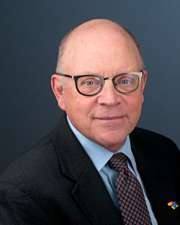
Missouri’s Harry Truman famously displayed a sign on his Oval Office desk: “The Buck Stops Here.” Nothing could have been clearer. In the end, the president is responsible for the nation’s well-being, regardless of the circumstances. Much the same is true for governors, who exercise similar authority, albeit in smaller domains.
This was driven home to me when I worked for Governor Kathleen Sebelius for calendar year 2005. No matter the issue, there was only one degree of separation between a citizen in Great Bend or Maize or Ottawa and the governor. Everything reached her desk, frequently with lightning speed. For better or worse, the buck stopped there, as she got both more blame and more credit than she deserved, whatever the policy outcome.
As a legislative scholar, I’ve grown more and more skeptical of steady increases in executive power, whether in Washington, DC, or the 50 state capitols. Still, when disasters strike, executives must act, both administering policy and reassuring the public. Delays, per Herbert Hoover, prove disastrous. Immediate, forceful action, per Roosevelt in 1933 and 1941, can limit damage and pull people together, however imperfectly.
While some major threats require federal responses, far more crises demand the attention of governors, whose authority is surprisingly great, both through their formal powers and the need for timely, coordinated actions. No crisis in over a century has tested American governors more than the myriad challenges posed by Covid-19 virus. And governors’ jobs have been made more difficult by President Trump’s slow, erratic, and often wishful pronouncements.
Governors make their choices inside a federal system, which has many virtues. States can react within their own economic, physical, and political context. Thus, what would be right for Michigan might not work in New Mexico. Moreover, governors know their states extremely well and can react more effectively than a distant president.
When governors make mistakes, however, things can go wrong quickly, even when other states demonstrate better ways forward. The idealized notion of states as “laboratories of democracy” holds real virtues, but the inevitable crisis failures in some of these “laboratories” penalize their citizens.
Thus, comparing the Covid-19 responses of the Kansas and Missouri governors illustrates the strengths and weaknesses of federalism in a time of crisis. Even as Missouri experienced a 600 percent increase in coronavirus infections last week, Governor Mike Parson remained slow to act. As one analysis stated, “Parson has not closed the schools (he waited until they all did it themselves, not issued a state-at-home order (not even close, not demanded that the legislature act urgently to get assistance funds to desperate health care professionals (still hasn’t happened) and not required non-essential business to close statewide (not state’s role).”
Compare that to Governor Laura Kelly’s first-in-the nation school closure action and her statewide “stay-at-home” order, despite just 320 cases in the state. Kelly has taken advice from her top professional advisor, Dr. Lee Norman, the state’s Secretary of Health, acting early, responding forcefully and thus reassuring Kansans that a competent hand is on the tiller.
We’ve got a long way to go, but so far Laura Kelly has quietly acted in the best interests of her 2.9 million constituents. In contrast to President Trump and Governor Parson, she makes no excuses. And like New York’s highly visible governor, Andrew Cuomo, Kelly knows exactly where the buck stops – with her.
Burdett Loomis is an emeritus professor of political science at the University of Kansas.






